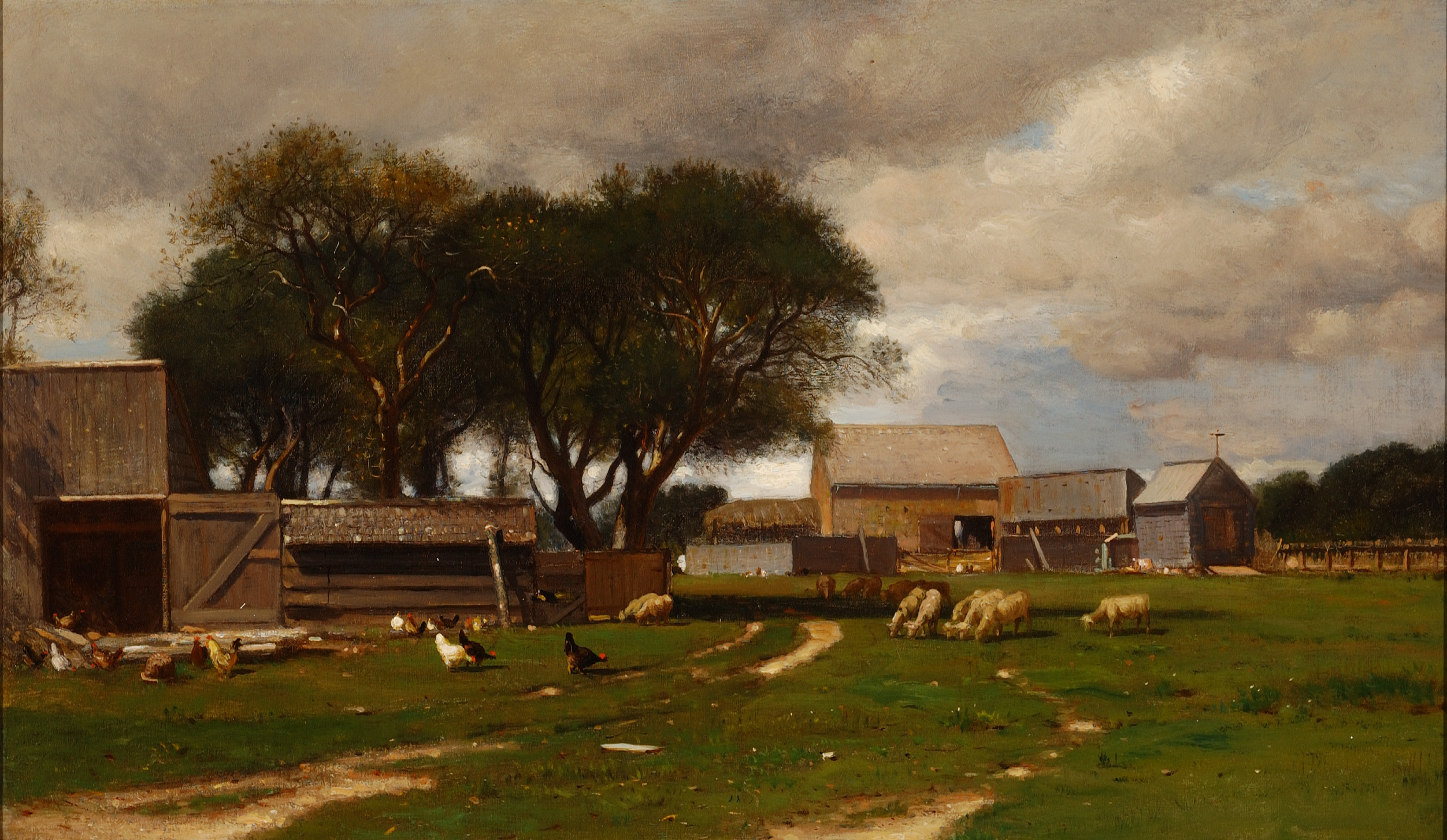New East Hampton Farm, Not Lester Farm

Every so often, when I drive down Three Mile Harbor Road from my house in East Hampton to the center of town to go shopping, I stop at the North Main Street Dry Cleaners on North Main. I park by the curb across the street, walk the 50 yards to the crosswalk where North Main meets up with Cedar, cross and drop the clothes off. I’ve been doing this for many years.
Along this 50-yard walk there is a single property facing out on North Main. From the time I first moved here, it’s been an impenetrable thicket of brambles and bushes with, in the wintertime, an occasional glimpse of a very old house in the back. I didn’t think much of it. This part of East Hampton is home to the Bonackers, an ancient clan of men and women, fishermen and baymen mostly, who are descended from the first settlers of East Hampton. Many of their very old houses are still to be seen in the area.
Around 2001, however, things began to change. One day, the framework of what would soon be a long wooden fence three feet tall appeared along the sidewalk where I was walking. It not only went all the way down to the corner, it also turned the corner and headed up Cedar Street about another 50 yards to end, apparently where the property line there ended. It was not an ordinary fence. It was made of barn wood, arranged as flat vertical panels with maybe four inches of space between each. It enclosed all the brambles and bushes. But these bushes, even as it was being built, were spilling over the top of it.
What a strange thing this was to do, enclosing wild, impenetrable woods this way. Whoever was building it, surely, was someone living inside. And to judge by the pace it was being built—a few new planks would go up every few days—it was being built by that person himself, with a power saw, nails and hammer. Nobody would be wandering in to that property from what was becoming a pretty busy corner now.
One day as I carried along my laundry I came across this man. It was about six months after he started this fence that I saw him. It was now completed and he was out there painting it white, board by board, beginning along the North Main Street side. He was a very, very old man. An old man in work clothes.
“Hi,” I said as I walked by. He looked up and made a dismissive wave of his hand at me. He was busy. I walked on and went about my business.
The work on the fence went on and on, the paint covering board by board, very slowly. He was in no hurry. One or two new boards would get painted about once a week or so. I never saw this man again, but I was just so struck by the fact that he was doing this. Had he hired someone to do it, a crew of men might have done it in two or three days. He was taking the better part of a year.
And then, one day, the work just stopped, stopped one third of it painted, to never start up again. It stayed that way for years and years.
Of course, walking by once a week, I came to the conclusion that the man must have passed on. But here he had been, at least 90 when I saw him, working away, embarking on a project at a time most people would think it not wise to embark on any long-term projects.
I did wonder who he was, and soon learned that he was Charlie Labrozzi, a local tile and bricklayer. He lived in the house alone. He was a nice guy, and he had indeed died. I looked him up in the obituaries. He had been 92 and he had died in 2003. I also wondered why he had built that fence. Nobody could tell me that, though.
The property with the partly painted white fence stood like that for the next three years. And then, all at once, workmen came in there and in very short order tore out the fence and took out all the brush and brambles to reveal a shabby but very magnificent old wood shingled classic saltbox from the Revolutionary era. There were outbuildings. There was a barn. I was told that the property now belonged to the Town of East Hampton and would someday soon become some kind of park.
But if the work tearing everything out had happened almost all at once, work on the buildings on this property proceeded very slowly. Someone would drive a pickup truck onto the property—right onto the lawn next to the house—and then put up a ladder and begin to re-shingle. Some other workmen boarded up the barn. Still other workmen took down some of the outbuildings.
The work fixing up this place proceeded at an even slower pace than the work earlier building the wooden fence. It went on for years. The shingling took so long that you could tell how it was done. The new shingles on one side were dark and weathered. The new shingles toward the other side were bright and new.
I made up my own explanation about why it was taking so long to restore this house. My theory was that there was no budget to do it. And so some of the local Bonackers were asked to come over on weekends when they had finished with their regular work to do all this as volunteers.
I think, finally, about 2008, the whole thing was finished. It stands tall today, a great 200-year-old saltbox house with a wooden barn adjacent, sitting on what is probably three and a half acres of land bearing several tall maple trees for shade.
What is to become of it? Last week, The East Hampton Star described how this property is slowly being transformed into the East Hampton Historic Farm Museum in honor of the many families who lived on and worked the farm, including the Lester family, which used this property as a farm between about 1870 into the early 20th century.
And it’s being done right. The town is currently partnering with the East Hampton Town Historical Society to keep the project moving. Meanwhile, a committee of volunteers coordinated by Prudence Carabine has been formed to keep things running. Eventually the project will be turned over to a new nonprofit agency which will run it.
At the present time, the village already has a museum dedicated to preserving artifacts from the Colonial era in Home Sweet Home, and the Mulford Farm museum preserves artifacts from the 1700s. Soon, the potential Sherrill Dairy purchase could result in a museum for artifacts from the 1800s, and then this East Hampton Historic Farm Museum will display artifacts from the time it had been a farm at the end of the 19th century. Indeed, many late 19th century farm artifacts have been found in a barn at the old Tillinghast Farm on Woods Lane, and they will be brought over to the farmhouse and shown at the museum when the time comes.
Meanwhile, in the spring the project gets underway in earnest. The committee will be planting a garden of spinach, peas and lettuce and other vegetables. And visitors will get to see these items cooked up and preserved using the old methods of that period 120 years ago in a late 19th century-era working kitchen.
Taking my dry cleaning in, it’s been a pleasure to watch the changes that have taken place on this important corner in the North Main Street commercial district of this town. The town now has a beautiful new park.



